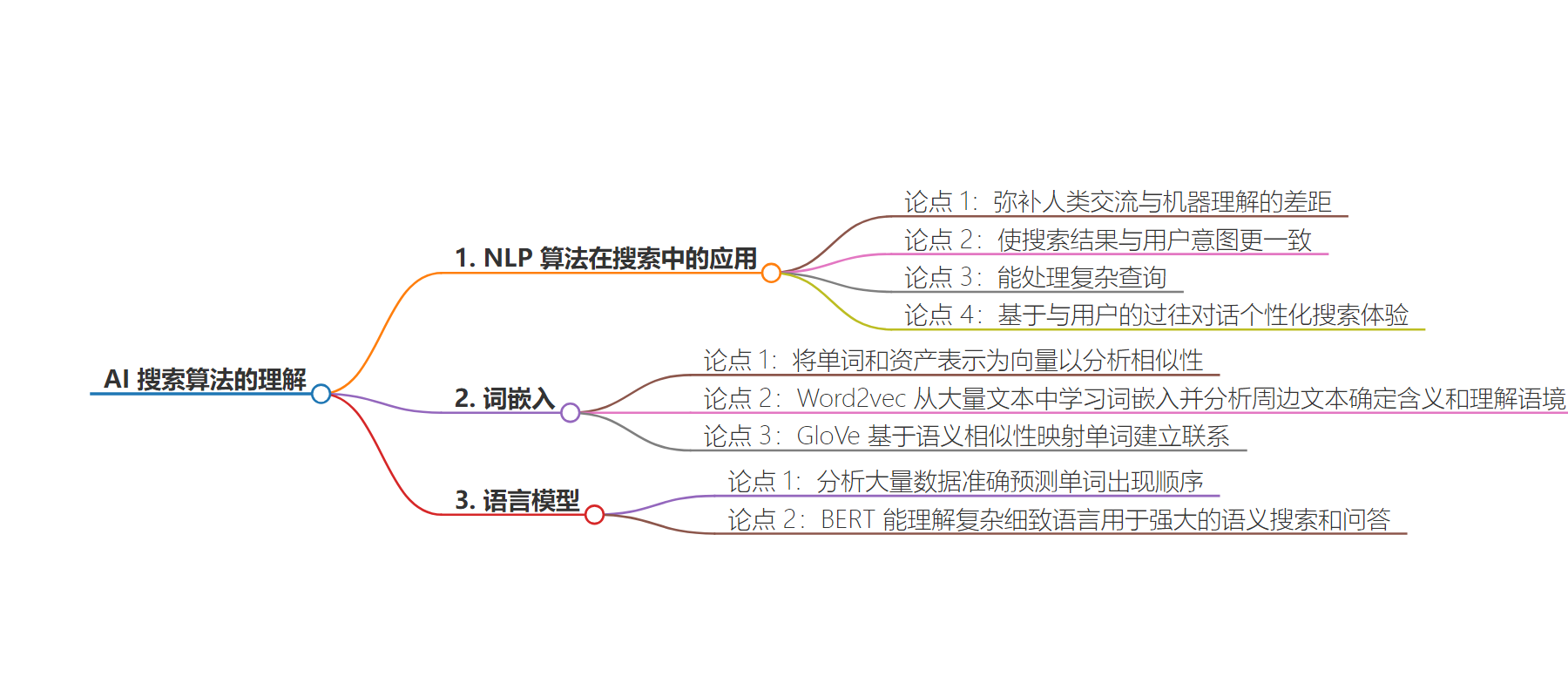包阅导读总结
1. 关键词:AI 搜索算法、NLP 算法、词嵌入、语言模型、搜索体验
2. 总结:文本介绍了 AI 搜索算法,强调 NLP 算法在弥合人机沟通和理解方面的重要性,通过它能个性化搜索体验。还提到词嵌入将文字等转化为数值,如 Word2vec 和 GloVe,以及语言模型能预测词序,像 BERT 可用于语义搜索和问答。
3. 主要内容:
– AI 搜索算法
– NLP 算法
– 弥合人类沟通与机器理解的差距
– 使搜索更符合用户意图,处理复杂查询,个性化搜索体验
– 词嵌入
– 用向量表示单词和资产,分析非结构化数据并转化为数值
– 如 Word2vec 从大量文本学习词嵌入,分析周围文本确定意义和理解语境
– 如 GloVe 基于语义相似性建立单词间连接
– 语言模型
– 分析大量数据预测词序
– 如 BERT 能理解复杂语言,用于语义搜索和问答
思维导图:
文章地址:https://www.elastic.co/blog/understanding-ai-search-algorithms
文章来源:elastic.co
作者:Jessica Taylor,Aditya Tripathi
发布时间:2024/7/5 14:40
语言:英文
总字数:2140字
预计阅读时间:9分钟
评分:88分
标签:AI,搜索算法,人工智能,AI 应用,AI 挑战
以下为原文内容
本内容来源于用户推荐转载,旨在分享知识与观点,如有侵权请联系删除 联系邮箱 media@ilingban.com
NLP algorithms are an essential part of search because they bridge the gap between human communication and machine understanding. This enables search AI to understand what is being asked of it and to deliver results that are relevant and contextual to the query.
Using NLP, the search results will be more aligned with the user’s intent, and the algorithm will be able to handle complex queries by understanding more nuanced requests. This is because it can identify sentiment and understand the context, as well as personalize the search experience based on previous conversations with the user.
Word embeddings
One of the ways an algorithm can work with words to find similarity is with word embeddings, where words and assets are represented as vectors. This is where it analyzes unstructured data like text and images and transforms them into a numeric value.
A popular example of this is Word2vec, an algorithm that learns word embeddings from a huge collection of written texts. It then analyzes the surrounding text to determine meaning and understand context. Another example is GloVe (Global Vectors for Word Representation), which is also trained to build connections between different words by mapping them depending on their semantic similarity.
Language models
There are also language models that analyze large amounts of data in order to accurately predict the likelihood of what order words will appear. Or in simpler terms, they’re algorithms that allow the search AI to not just understand what we’re saying, but also be able to respond in a way that matches how humans communicate.
For example, BERT (Bidirectional Encoder Representations from Transformers) is a popular language model that’s able to understand complex and nuanced language, which can then be used for powerful semantic search and question answering.
